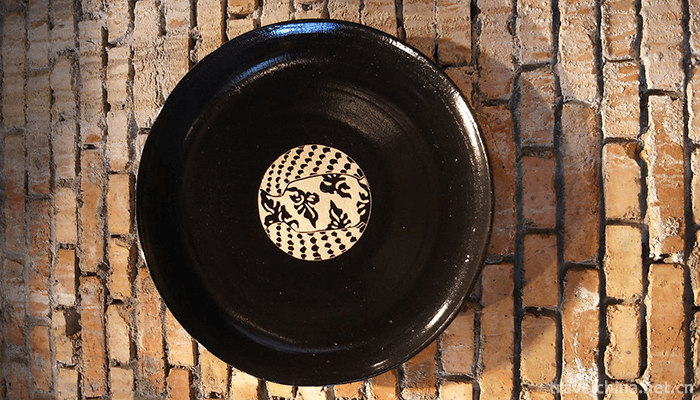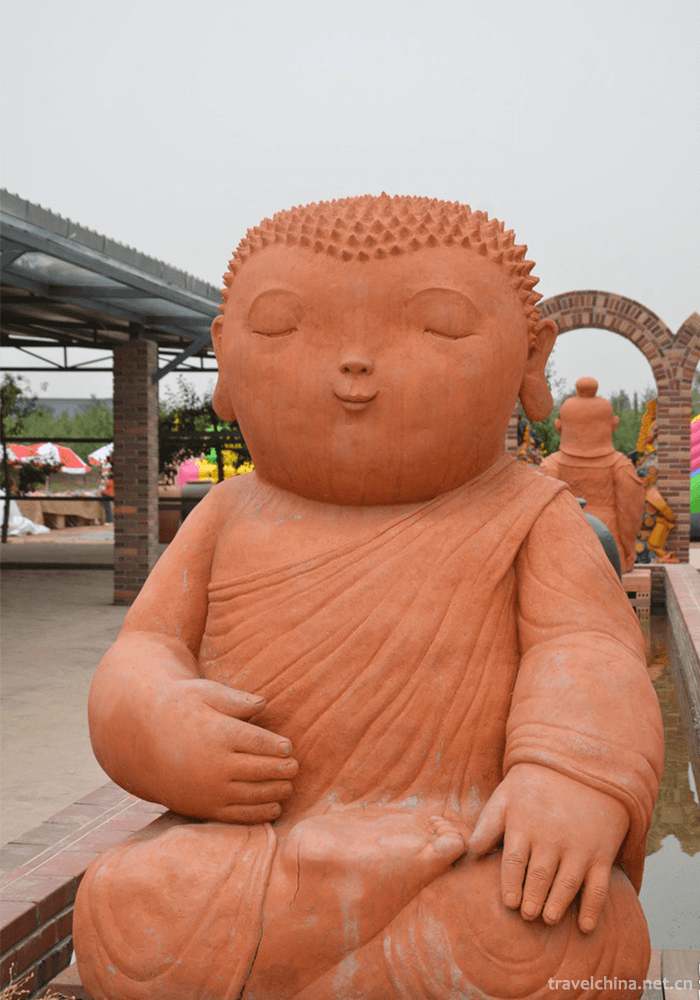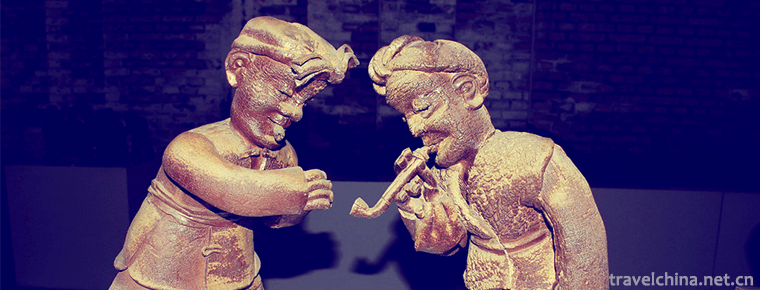Fuping Pottery Art Village
Fuping Pottery Art Village
Pottery Village is located in the north of Fuping County. It relies on the site of Tang Dingzhou Kiln. It is a cultural and custom experience scenic spot consisting of a quasi-three-star hotel, three exhibition halls, several pottery workshops and thousands of Mu orchard. Because of the abundant pottery resources nearby, pottery village has a long history and culture. As early as the flourishing Tang Dynasty, it was the world-famous sacred pottery official kiln.
Introduction
Fuping Ceramic Village is a group member unit of the International Society of Ceramists, affiliated to UNESCO, in mainland China. It is also the permanent site of the Forum of Editors-in-Chief of the Journal of the International Ceramic Society. Fule International Ceramic Museum Group is located in 1000 mu Eco-fruit Forest Garden of Fuping Ceramic Art Village, Shaanxi Province. It is the first ceramic art museum group with modern ceramics as its theme in China. At present, the museum group covers an area of over 100 mu (67,000 square meters), with a construction area of 20,000 square meters and an investment of 16,000,000 yuan. There are seven buildings, consisting of 13 branches, a comprehensive exhibition hall and a ceramics literature museum. Form. The main pavilion, France Pavilion, Nordic Pavilion, Australia and New Zealand Pavilion, USA Pavilion, Canada Pavilion, Mexico Pavilion, Italy Pavilion, Germany Pavilion, Netherlands Pavilion, Belgium Pavilion, Britain Pavilion, Spain Pavilion, South America Pavilion, Switzerland Pavilion, Eastern Europe Pavilion, Ireland Pavilion, Southeast Asia Pavilion, Russia Pavilion, India Pavilion and Ceramic Art Document Museum This is the case. At present, nearly 10,000 works of 579 pottery artists from 56 countries and regions have been collected.
Practical information
Opening Hours:
9:00-17:00
Ticket information:
Entrance tickets include passes to seven major museums. It does not include payment items for playing clay (40 yuan/person/90 minutes), pottery making and mailing fees.





-
2.Crystal shrimp dumplings
Crystal shrimp dumpling is one of the traditional Cantonese tea house snacks. It is as famous as dry steamed cooking, fork cooking and egg tarts.
Time 2018-11-14 -
3.Olympic Rowing Canoeing Park
Beijing Olympic Water Park, also known as Shunyi Water Park, is located in Chaobai River, Mapo Township, Shunyi District, Beijing. Its building area is 31850 square meters, and the number of seats is
Time 2019-01-02 -
4.Floral water bay hot spring resort
Huashuiwan Hot Spring Resort is located at the foot of Xiling Snow Mountain in Dayi County, Chengdu, Sichuan Province, surrounded by mountains on all sides. National AAAA scenic spot.
Time 2019-01-17 -
5.Xishan Scenic Area Kunming Yunnan
The Xishan Scenic Area in Kunming, Yunnan Province, is a forest park with ups and downs, verdant trees, white birds contending and beautiful scenery. Dense forest vegetation
Time 2019-02-25 -
6.Western Henan Grand Canyon
Western Henan Grand Canyon Scenic Spot is located in the west of Henan Province, which refers to the area west of Zhengzhou, the capital of Henan Province, including Luoyang
Time 2019-03-09 -
7.Changying Century City
Changying Century City, located in Nanguan District, Changchun City, Jilin Province, was founded in 2003. It is a comprehensive tourist area integrating science and technology, adventure, performing a
Time 2019-03-17 -
8.Kimchi Making Skills Korean Kimchi Making Skills
Kimchi of Korean nationality is one of the traditional food with the most national characteristics of Korean nationality, and its pickling method is constantly enriched and developed. In the long hist
Time 2019-06-09 -
9.Production Techniques of Pu er Tea
Pu'er tea production technology, also known as tribute tea production technology, has been formed through thousands of years of practice. The basic procedures are as follows: sacrificing the God of te
Time 2019-06-09 -
10.Chengdu Technological University
Chengdu Institute of Technology is a public full-time general undergraduate school organized by the People's Government of Sichuan Province. Founded in 1913, the school is the first industrial school
Time 2019-08-31 -
11.Beijing Institute Of Technology
Beijing Polytechnic University was born in Yan'an in 1940. It is the first university of science and engineering founded by the Communist Party of China. It has been one of the key universities in Chi
Time 2019-09-06 -
12.Scrambled eggs with green peppers
Fried eggs with green peppers is a family dish. The main ingredients are eggs and green peppers. The auxiliary ingredients are lard, salt, vinegar, onion, etc. the main cooking technology is fried, ye
Time 2020-04-10